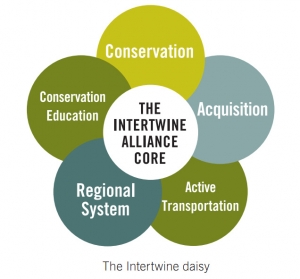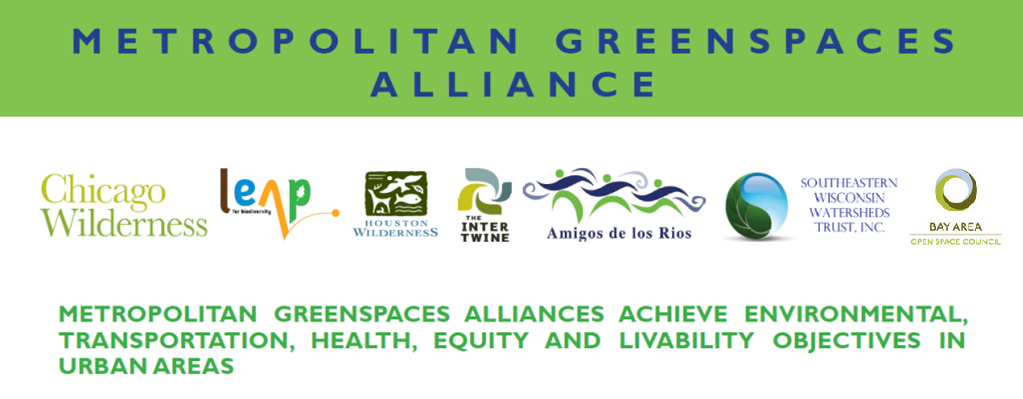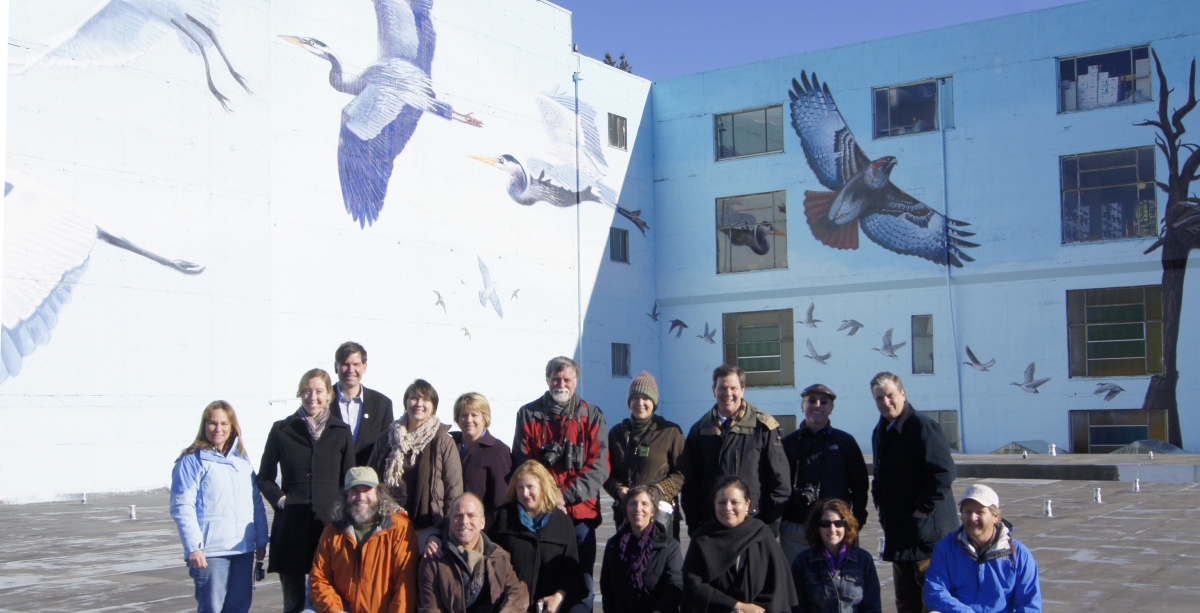The Intertwine Alliance is made up of public, private and nonprofit groups working together to create a vibrant and healthy region.

Our region has a strong history of environmental stewardship and progressive conservation leadership. The founding of the Intertwine Alliance (2007) is an exciting new chapter in the work to integrate nature back into our daily lives, and represents the latest example of local innovation and foresight to protect our region's natural assets.
After the second of two successful ballot measures to raise public funds for park-land acquisition (1995 and 2006), then-Metro Council President David Bragdon led the effort in 2007 for the regional government to incubate what would become an independent, nonprofit organization working to “create the world's greatest system of parks and trails.” Originally called the Connecting Green Alliance, the Intertwine Alliance was formed to help unify environmentalists, conservationists, trail builders and others across city, county and state lines. As Mike Houck wrote, “After the passage of the region's second bond measure in 2006 it was obvious, especially to those of us who had worked on the 1992 Metropolitan Greenspaces Master Plan and both regional bond measures, that to achieve the long range vision of an interconnected bi-state system of parks, trails, and natural areas we were going to have to ramp up, and institutionalize the effort at every level, from the all-volunteer friends organizations to the bi-state region.” Metro hosted a Connecting Green Summit in 2007, and invited regional civic leaders to sign a pledge to work together for a regional network of parks and trails after a speech and presentation by former Chicago Mayor Richard Dailey. The Intertwine Alliance officially become an independent nonprofit in 2011.


Partners from various local, regional and national organizations quickly saw the power in creating a regional coalition of partners. Partners such as the Trust for Public Land, The Audubon Society and Clean Water Services have been early enthusiastic supporters. The Alliance was designed with the notion that "nature doesn't stop at political boundaries." As such, The Alliance unites groups from different political jurisdictions, business sectors and ways of life to work together with the common goal of improving the natural world around us - for humans and for wildlife.
The bi-state focus of The Intertwine, centered on the Columbia and the Willamette Rivers, enables partners on both sides of these ecologically important water bodies, such as the Vancouver-Clark Parks and Recreation Department, the Columbia Land Trust, and the Vancouver Watersheds Alliance, to play an equal role in conservation planning efforts and future park and trail system investments. This deliberate coordination across state lines is largely a first in the long history of environmental advocacy in our region. Similarly, the inclusion of private businesses as partners in The Intertwine Alliance demonstrates the unique alliance way our organization is working with a variety of leaders across the region.
Investment in our park systems creates cost-effective infrastructure, boosts economic development for local businesses (particularly in certain industries located here, such as athletic/outdoor apparel), and improves the quality of life or our residents (which in turn attracts more businesses). Local businesses such as Keen Footwear, Bike Gallery, Alta Planning and ODS have stepped forward to become partners because they see the value of promoting The Intertwine vision in their bottom line. Our coalition continues to grow; from larger organizations such as the Port of Portland who are committed to economic development in the region, to smaller community-based nonprofits, such as the Friends of Baltimore Woods working to revitalize habitat in their St. Johns neighborhood. By teaming up, Alliance partners are expanding the call to integrate nature into our educational systems, our infrastructure, and ultimately our daily lives.

Every successful initiative in this region has been brought about after convening a broad, diverse group of partners from public, private and nonprofit organizations. Rather than put it together each time we wanted to do something big. We thought, why not create an organization that continues to keeps these partners engaged year round?
— Mike Wetter, Executive Director, Intertwine Alliance
The Intertwine Alliance is different in that it is formed by a broad, diverse coalition of public agencies, nonprofit organizations and private businesses that see the benefit in integrating nature and natural resources into the Portland metropolitan area. These leaders in their respective sectors recognize the importance of building an interconnected network of parks, trails and natural areas, whether for economic development, for public health or for environmental conservation.

In 2010, The Intertwine Alliance joined the Metropolitan Greenspaces Alliance, a coalition of partners working for increased environmental conservation and stewardship in metropolitan areas around the country. This coalition of metropolitan conservation advocates is working to help craft new state and federal policies that will yield more resources for conservation in urban and metropolitan areas. By speaking as one voice, the Metropolitan Greenspaces Alliance can work with federal partners such as the Department of Fish and Wildlife, the National Forest Service, and the National Park Service to help integrate their conservation work into urban areas across the country. The Bay Area Open Space Council joined Houston Wilderness, Los Angeles’ Amigos de Los Rios, Chicago Wilderness, Milwaukee’s Southeastern Wisconsin Watersheds Trust, Cleveland’s Lake Erie Allegheny Partnership and The Intertwine Alliance in 2012 as the seventh partner organization. This group pioneering a unique collaboration is expanding to include other metropolitan conservation groups from around the country. The Metropolitan Greenspaces Alliance held its 2012 retreat in Portland, enjoying a tour of Oaks Bottom from the Urban Greenspaces Institute’s Mike Houck and presenting their work at the February 2012 Intertwine Alliance Summit.

(Representatives from the seven organizations in the Metropolitan Greenspaces Alliance convened at Oaks Bottom in Portland, Oregon in February 2012.)
